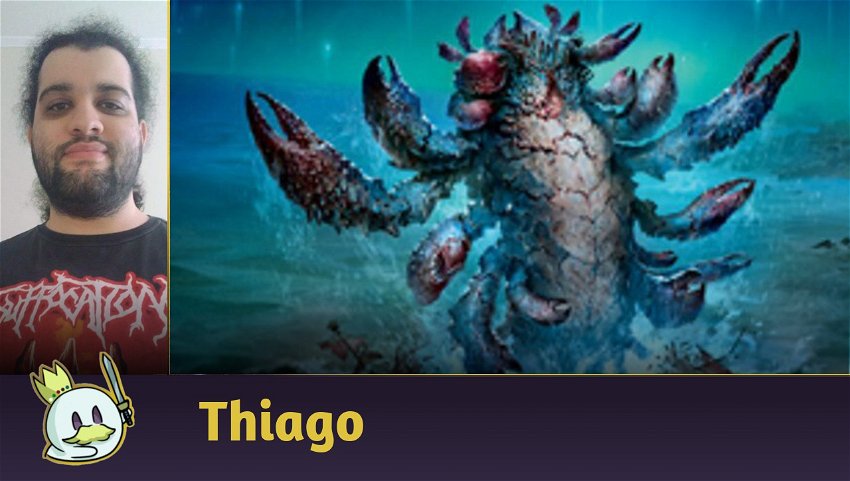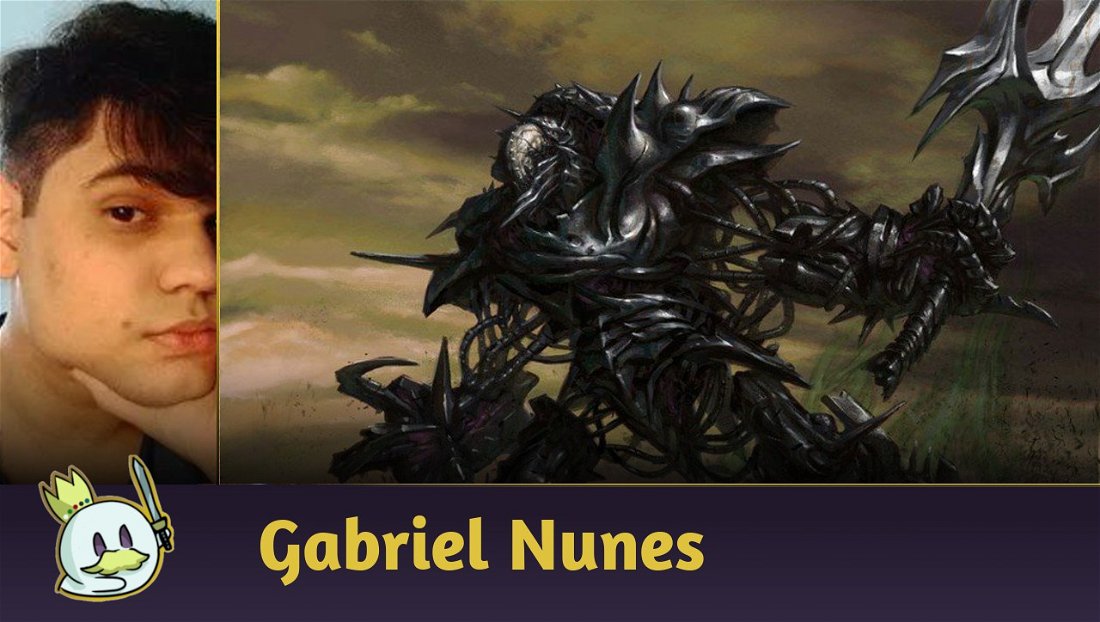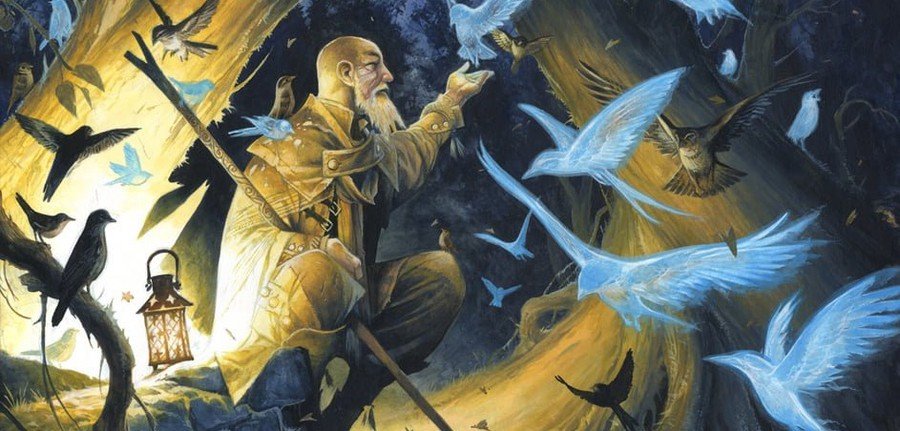We have in Standard two decks that are standing out in the format, Mono White Aggro and Izzet Control. It's the last one we'll talk about today.
First, I'm going to present a list that I consider to be one of the best, if not the best, for the current metagame, and then I'll explain the deck's game plan and the role of the top cards. At the end of the article, there is a sideboard guide for the main matchups.
Explaining Izzet Control
The idea of the deck is to control the board long enough that in a few turns the new finisher, Hullbreaker Horror, wins the game with or without Lier. Basically, untapping with the Horror means victory because with the amount of cantrips and interactions we have in the deck, we can choose which permanents stay on the board and which spells resolve on the other side.

The main engines of the deck are Hullbreaker and Lier in game 1 and the extra turn post-side in matcheups against black-based control. Goldspan Dragon comes up as an alternative that puts pressure on the board and blocks well against aggro, as well as not being taxed by Thalia, Guardian of Thraben.

One card that positively surprised me was the Midnight Hunt artifact, The Celestus. On Izzet mirrors and other controls, whoever untaps with Celestus first wins because the advantage generated is such that it's almost never possible to get back in the game. The life gain part is relevant against aggro and can hold the game for 1 or 2 more turns, long enough to turn the tides with your threats.

Our anti-aggro package counts all of the above removals, some of which are flexible, like Thundering Rebuke and Demon Bolt, which are good for killing Lier and Dragons on the mirror match. The copy of Cinderclasm in the maindeck is for having a good game 1 against Mono-White, the most popular deck of the format, the same goes for Spikefield Hazard.
The snow mana base is just to include Frost Bite in the list, which is well-positioned as it handles all of Mono-White's threats except for Adeline, Resplendent Cathar. Even with some lists using Reidane, God of the Worthy, there are 11 snow lands in the deck and only 9 enters tapped with it on the board, so I believe the payoff for destroying any creature with up to 3 toughness for 1 mana is good enough.
Fading Hope has been used more even on post-side mirrors when there are 2 or more lobsters on the other side because Izzet doesn't permanently deal with the creature unless it spends too many removals at once, risking taking a cheap interaction that might return the threat to its owner's hand.
As we use Lier in the deck, there is no way to leave hard counters on the 60 cards, but Divide By Zero has been fulfilling the role of Tempo play that generates 2-for-1 with lessons in the sideboard very well.

In the card advantage department, we have Unexpected Windfall, Expressive Iteration and a copy of Consider, in addition to the Celestus that I mentioned earlier.
Iteration needs no comments, being the best cantrip in Standard and one of the best recently released cards, so much so that it sees play in all formats. For 2 mana you choose the best interaction to your hand and (almost always) guarantee the land drop. The card does a lot for its low cost, and it is essential to run 4 copies. Consider is a cheap cantrip to trigger Horror or generate immediate advantage with Lier, due to its low mana cost.
Windfall is our way of speeding up the game in mana, as the deck doesn't have ramps. In addition to drawing cards and creating treasure tokens, it is synergistic with Goldspan Dragon, which ramps even further with these treasures, allowing for more plays in the next turns.
An important point of the deck is to understand that, despite being a controller, it is not one of those traditional lists that do nothing but interact for 15 turns and from then on, start playing cards that win the game. With Lier and Hullbreaker, we control the board while quickly turning the board for the win. In some situations with only Lier on the battlefield, being very far behind the board and with low life, this hard control strategy needs to be used, but normally 2 or 3 interactions are enough for us to attack.
Galvanic Iteration in the main deck is to get more value out of plays with Lier and Hullbreaker, in addition to drawing 4 cards and creating 4 treasures with Windfall by discarding only one card. The magic itself is good for this archetype, and its use is flexible. The two copies on the sideboard are for the transformative plan on the mirrors when we go into the Turns plan.
Sideboard Guide
vs. Izzet Control
IN:

OUT:

The plan on the mirror is to come back post-side with the Epiphany + Galvanic combo and rely less on Hullbreaker. The lobster is still good, but this plan ends up being weaker than playing 5 turns in a row because we don't have as many cheap interactions to take advantage of Horror's ability anymore, plus you can block it for many turns with 1/1 birds.
vs. Mono White
IN:

OUT:

There's not much secret against Mono White, we add all removals, even Burning Hands which kills almost any creature, and take out Windfall, our only spell taxed by Reidane.
Our game acceleration is harmed, but we still have the dragon that blocks very well and, if it attacks, it generates mana advantage. If you want to lower the curve, we can take 1 Horror and put 1 Galvanic in its place.
vs. Mono Green
IN:

OUT:

Against Mono Green, we want to control the board until Lier or Hullbreaker comes into play. The problem is that green creatures are huge and have the format's best protection, Snakeskin Veil, which often wins the game instantly by saving a creature, in addition to giving a counter.
I like to add Disdainful Stroke because it counters Esika's Chariot, Ulvenwald Oddity, and Avabruck Caretaker . If you are against a list with a low curve, it is better to leave an Iteration instead of Stroke.
vs. Orzhov Control
IN:

OUT:

The plan against Orzhov is similar to the mirror, with the difference that we leave more removals for the creatures. Although Cinderclasm handles all creatures except for the manlands, I don't really like it because it's rarely necessary to clear the board, not least because Blood on the Snow plays the same role for us. Precisely because of this card and Go Blank is that we add the counters and took out Lier, who cannot extract value from an empty graveyard.
The key cards here are Celestus generating card advantage and gaining life to counter the 1/1s' damage, Windfall to speed up our game, Test of Talents with very sharp targets, Blood on the Snow and Go Blank, and Goldspan Dragon to put pressure on the board while calling out removals like Soul Shatter and Infernal Grasp for himself, clearing the way for Hullbreaker to have a better chance of surviving.
Conclusion
That's it for today! I hope you enjoyed the deck analysis and that the sideboard guide helps you in your games.
Any questions, comments or feedback I'm available in the comments below.














— Comentarios 0
, Reacciones 1
Se el primero en comentar